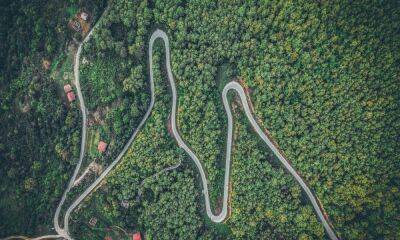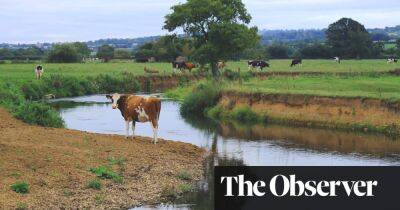The Guardian view on the warming of the Alps: a challenge for tourism
The Victorian writer and mountaineer Leslie Stephen – the father of Virginia Woolf – called the Alps “the playground of Europe”. And so they have been, in winter and summer alike, for many generations. But with excessive warming now placing some of the Alps’ most iconic summits out of bounds, for how much longer can the freedom of Europe’s playground continue?
The basic problem is the warming of the Alps. Snowfall this past winter – especially in the southern Alps – was down by two-thirds from what was once considered normal. The loss of snowmelt is a direct cause of this summer’s brutal drought in the Po valley. Last month, Swiss scientists found that weather balloons were having to rise to 5,184 metres (over 17,000ft), well above the very highest peaks, before they finally reached freezing point.
The central Alps are badly affected too. This year, the snow had all gone by the start of July, at least a month earlier than the previous record. There is no snow on the now closed Matterhorn summit. Meanwhile, the rapid melting of the Theodul glacier nearby has meant that the Italian-Swiss border itself, which traditionally follows the drainage divide between north and south, has had to be shifted significantly in Italy’s direction as the glacier has shrunk.
Higher temperatures mean less ice, including less permafrost; less ice means more rockfalls; and more rockfalls mean more fatalities. The worst accident this summer has been on the Marmolada glacier on the northern slopes of the highest peak in the Italian Dolomites. Eleven climbers were killed when a block of ice and rock plummeted down the glacier without warning. The Marmolada has lost 80% of its volume since 1950, and may disappear altogether in another 15 years. Other
Read more on theguardian.com



![Why Bitcoin Cash [BCH] investors shouldn’t expect profits anytime soon - ambcrypto.com - city Santiment](https://finance-news.co/storage/thumbs_400/img/2022/8/28/38741_fcnrq.jpg)





![Is Ethereum Classic [ETC] the next safe haven for ETH miners? Here’s speculating - ambcrypto.com](https://finance-news.co/storage/thumbs_400/img/2022/8/28/38735_hhw.jpg)

![Bitcoin [BTC] hashrate, block difficulty, hit landmarks but what do miners get? - ambcrypto.com](https://finance-news.co/storage/thumbs_400/img/2022/8/27/38733_172.jpg)









